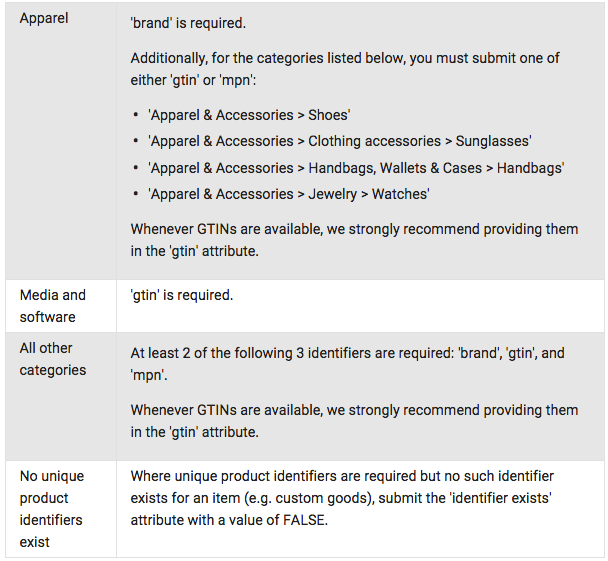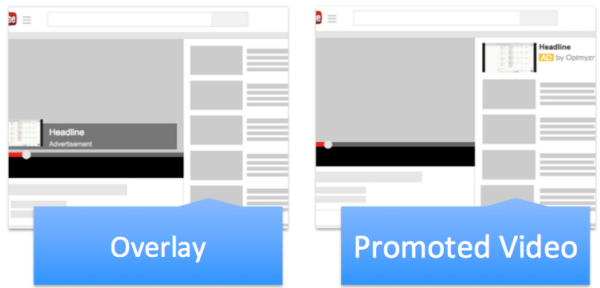Cut AdWords Certification Time In Half With These Study Guides For Shopping & YouTube
Do you need to study for your AdWords certification exams or will you pass without cracking a book? Columnist and former Googler Frederick Vallaeys lays out the critical things to know for the Shopping and YouTube tests.
Unlike doctors, most of us PPC professionals don’t have fancy-looking diplomas hanging in our offices. That’s if we even have an office at all and don’t work from a cubicle or, in the case of a lucky few, from the beach.
Myself, I proudly display the certificate I got from Google about 10 years ago for having accrued a million clicks in AdWords. Back then, that was a big deal, but the paper certificate wasn’t the prettiest.
Now Google’s offering to send a much better-looking certificate to any member of the Google Partners program who passes all six AdWords certification exams in the next two weeks. (You must be signed up to receive Partners News, Special Invitations, and Promotions to receive the certificate.) For the record, I’ve been hosting weekly refresher courses on behalf of Google to help people prep for these exams, but they didn’t ask me to write this article.
As you can probably tell from my previous columns, I’m all about efficiency. And if you’re actually using AdWords professionally, chances are you’re ready to just take the test and quickly get the 80 percent score required to pass. You’ll probably even do it in a lot less time than the 90 to 120 minutes Google allows, depending on the test.
Since there’s probably no need for you to spend hours prepping, I’d like to help you figure out how ready you are. Keep in mind that if you overestimate your own readiness and fail the first time, you have to wait a week before you can take the test again.
I’ll tell you some of the concepts you should know so you can decide if you should just start the test and get it over with or if you need to brush up on your knowledge first with Google’s detailed study guides. I’ll cover just the shopping and video certifications today because these are the two tests that touch on tools other than AdWords that people may be less familiar with.
There’s definitely no substitute for using the tools to get ready for the certification exam, but here is what you should focus on learning.
Shopping Certification
The Shopping Ads certification requires you to know the two tools you need to get a shopping ad online: the Google Merchant Center (MC) and AdWords (AW).
Merchant Center
Domains, Contacts and Multi-Client Accounts (MCA)
The MC technical contact is the one who will receive notifications about feed issues. If you’re an agency managing feeds for multiple websites, you’ll need an MCA account because it allows you to validate multiple domains and manage them under a single login. If you lose the verified status for your website, you’ll also lose your website claim in the Merchant Center.
Feed and Data Specifications
A feed is typically submitted as a tab-delimited file (though it can also be XML or a Google Sheet), and Google expects you to refresh the data at least once every 30 days or as soon as product pricing or inventory changes. To get a feed processed more quickly, you can segment it into smaller feeds. You should always submit a test feed when you’re first starting to make sure there aren’t any issues with the data.
The unique identifier fields that are required for each product depend on the type of products you’re selling. You can refer to this handy table from Google to understand what product identifiers are needed. Generally, though, you should submit two out of the three main identifiers — brand, Global Trade Identification Number (GTIN) and Manufacturer Part Number (MPN).
For custom products, Google provides a special field called “Identifier Exists” where you can submit a value of false.
If your product falls under multiple product categories, don’t submit the product twice. You’re probably aware that Google doesn’t look favorably on duplicate content, so pick the category that best describes the product and submit it just once.
Feed Disapprovals
Feeds may be disapproved, usually when the data is deceptive or incorrect in some way, e.g., the price on the landing page doesn’t match the price in the feed, or the language of your landing page doesn’t match that of the product.
If you have sale prices or free shipping, Google provides special fields for these, so be sure to use them to avoid getting a disapproval.
Images in Feeds
For certification, you’ll need to answer several questions about what images should be submitted with a feed. Not only do you have to include at least one image, but it should be a high-quality image that doesn’t include any overlaid logos, text or prices.
Google wants good, clean data, hence an image should be just a photo that shows off the product at its best.
Adding Data In The Feed For AdWords
If you were accustomed to working with PLAs but haven’t spent much time with Shopping ads, you’ll need to know that the AdWords labels were deprecated and now you can use Custom Labels to submit your own list of attributes that can be used for grouping products in AdWords.
For example, you can use a custom attribute to identify clearance products and then create a high-priority campaign with just the products that match this custom attribute to make sure these ads get served before any other products from your feed.
AdWords
AdWords Shopping Campaigns
The AdWords portion of the test covers some of the unique metrics only available in Shopping Ads, like benchmark data. For this, you should know that benchmark data is only available when there is enough comparative data and your product group is not at the item ID level, i.e., there is more than one item ID in the product group.
Likewise, the Bid Simulator tool will only return estimates when your ad has been in enough auctions that there’s enough data for Google to work with.
Keywords In Shopping Campaigns
Know that the structure of a shopping campaign is somewhat different from a traditional campaign. For example, there are no keywords used for targeting, though you can add negative keywords. If you need ideas for negative keywords, there is a query report under the Dimensions tab.
Account Structure
Campaigns and ad groups have mostly the same attributes as a regular AW campaign: a campaign can be used to target locations and maintain separate budgets, and ad groups can be used for mobile bid modifiers and negative keywords.
One thing that’s unique about Shopping Campaigns is that they have priority levels of high, medium and low that indicate to Google which bids to use first when a product exists in multiple campaigns.
Product Groups
Another unique structural element of shopping campaigns is product groups, which are used to set bids. The bid at the product group level applies to all products covered by that group, so try to keep groups tightly related to bid more efficiently.
Promotional Text
The ad group previously included a promotional text, and while this feature is being retired, it may still show up on the test. In practice, a more useful way to make sure Google knows about special deals on products is through a separate Promotions Feed.
Video Certification
The video certification test is mostly about TrueView ads placed through AdWords For Video and mastheads on YouTube. It doesn’t touch much on video ads for GDN created with the Ad Gallery.
YouTube
To work with video ads, you need a YouTube account with videos that are either unlisted or public. Private videos or videos hosted elsewhere cannot be used.
Linking With AdWords and G+
AdWords can be linked to multiple YouTube accounts. YouTube can be linked to Google Plus, which makes it easy for one person to manage multiple YT accounts from a single login or for multiple people to administer the same YT channel.
Masthead Ads
Ads shown at the top of the YT home page are called mastheads, and they are bought for a flat fee that’s based on what countries you’re targeting and how many days you want to take over the YT home page. Mastheads also show on the YT apps for iOS, Android and on the m.youtube.com mobile site. If you want access to reserved inventory or a masthead, you will need to contact your Google rep to place the order.
Call-To-Action Overlays
When users watch your video, you can include an overlay that links to your website. The CTA overlays are added from inside AdWords, but there is no extra fee for these, and they will continue to show on videos even if you stop promoting them. These overlays will show on mobile and desktop, and even when your video is embedded on another site.
Companion Banner Ads
There are a lot of technical specs for video ads and accompanying display ads, and the companion banner format is somewhat confusing because if you submit your own companion banner for display next to your in-stream video ad, its size has to be 300 x 60 pixels. If you don’t submit your own creative, Google may show an automatically generated block of related videos from your channel that is 300 x 250 pixels. There can also be display ads placed through GDN on YouTube, and those can also be the larger format.
TrueView Ads
TrueView ads are video ad formats where you only pay for engaged users. These ads are placed through AdWords for Video. There used to be additional formats like in-search, but nowadays Google is mostly focused on in-stream and in-display ads, and those are the two to know for the test. TrueView ads are distinguished from other video ads in that they are priced on a cost-per-view (CPV) basis.
In-Stream TrueView Ads
This ad is much like a TV ad. It plays during another video, so it’s not by choice that the user sees them. What makes it a TrueView ad is that the user can skip it after five seconds. The advertiser pays only if the user watches for at least 30 seconds, or for shorter videos, until they reach the end. Because you get five seconds for free, even if the user skips the ad, a good optimization tip is to start the ad with a strong message and a call to action so that the user will either watch your entire message or take another action, like visiting your site.
In-Display TrueView Ads
This ad is shown to a user as a suggestion of something they might want to watch. The video won’t start playing until the user clicks the thumbnail. In this case, the user’s action is the click that starts the video playing, so that is what the advertiser pays for. These ads can show on search pages, watch pages or on pages on GDN. The ad can show as an overlay on top of another video or as a thumbnail on a page of content.
Approvals
Like other ads, Google expects to review new submissions in about one business day. While ads are unreviewed, they are labeled “eligible” and may appear on search results pages. Once they become “approved,” they can show elsewhere. A TrueView video ad has no limit on maximum duration other than what you are able to upload to YT.
Account Structure
While AdWords for Video has campaigns, there are no ad groups. Campaigns can contain a mix of both ad formats: in-stream and in-display. The way you target the ads is through “targeting groups,” and each campaign can include 10 of these.
Targeting Groups
Each targeting group can combine demographics and GDN-style targeting options.
When using multiple targeting options, they are additive, which is slightly different from regular GDN targeting where you can use multiple targeting options with different bids but without reducing your reach. The only targeting option that is NOT available is IP exclusions. You can select different ads from the campaign for each group. Each group can have its own CPV bid.
Remarketing
When you link a YouTube account to AdWords, you instantly get access to remarketing audiences with people who have watched your videos or interacted with them. The initial list can include users up to 30 days back. The only place where you can’t use a YT remarketing audience is with RLSA (remarketing lists for search ads).
Measuring Results
Conversion tracking works just the same way as you’re already used to. Simply install the tracking code and start getting data about conversions and view-through conversions from TrueView ads.
Instead of measuring CTR, you’ll want to analyze your VTR (view-through rate) and also keep an eye on quartiles that indicate how many users watched at least 25 percent, 50 percent, 75 percent or your entire video. YouTube is a social site, so it’s a good idea to figure out how to value social activity like shares, endorsements and earned actions like follow-on views.
Finally, pay attention to the average view frequency (how often a user views the same ad on average). If that number is too high, use frequency capping to avoid inundating users with the same ads.
YouTube Analytics
In addition to tracking metrics in AdWords, you can also get a lot of information in YouTube Analytics reports like Engagement and Audience retention, where you can find the average view duration for your videos.
Conclusion
I hope I’ve not told you anything you didn’t know already and you are ready to get certified. Good luck with the exams, and I hope you will soon have one of those nice framed certificates to show off to all your clients and coworkers!
Opinions expressed in this article are those of the guest author and not necessarily Search Engine Land. Staff authors are listed here.
Related stories












